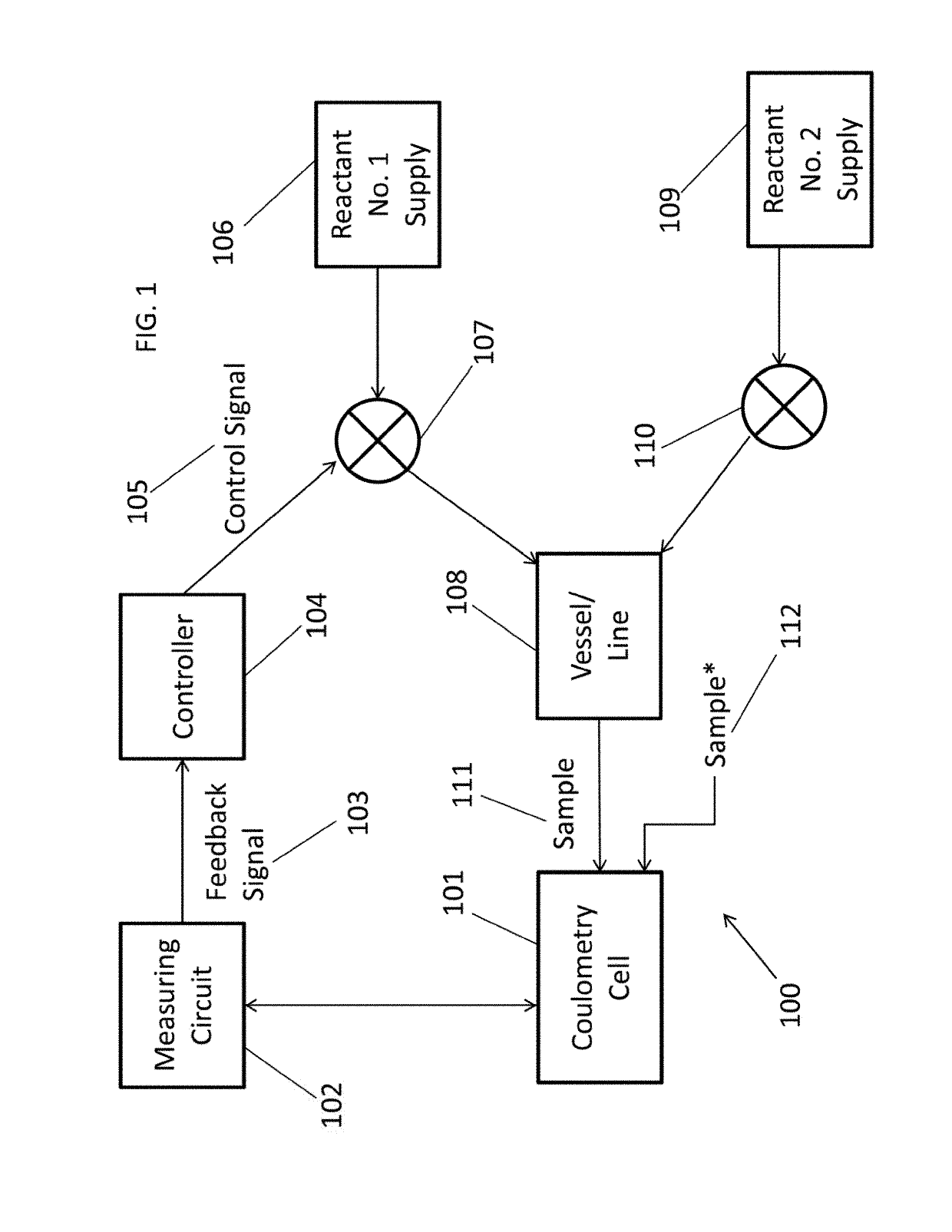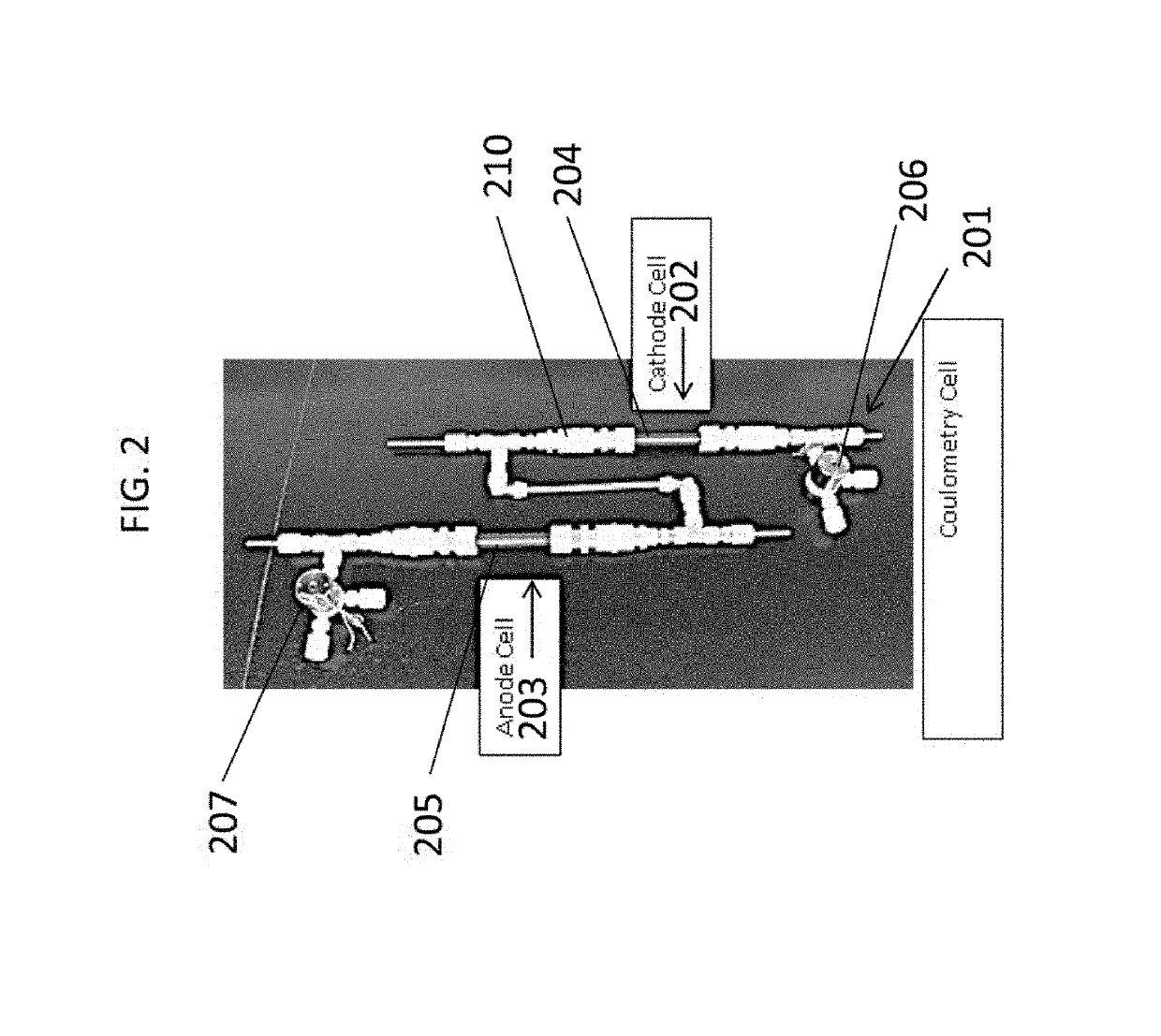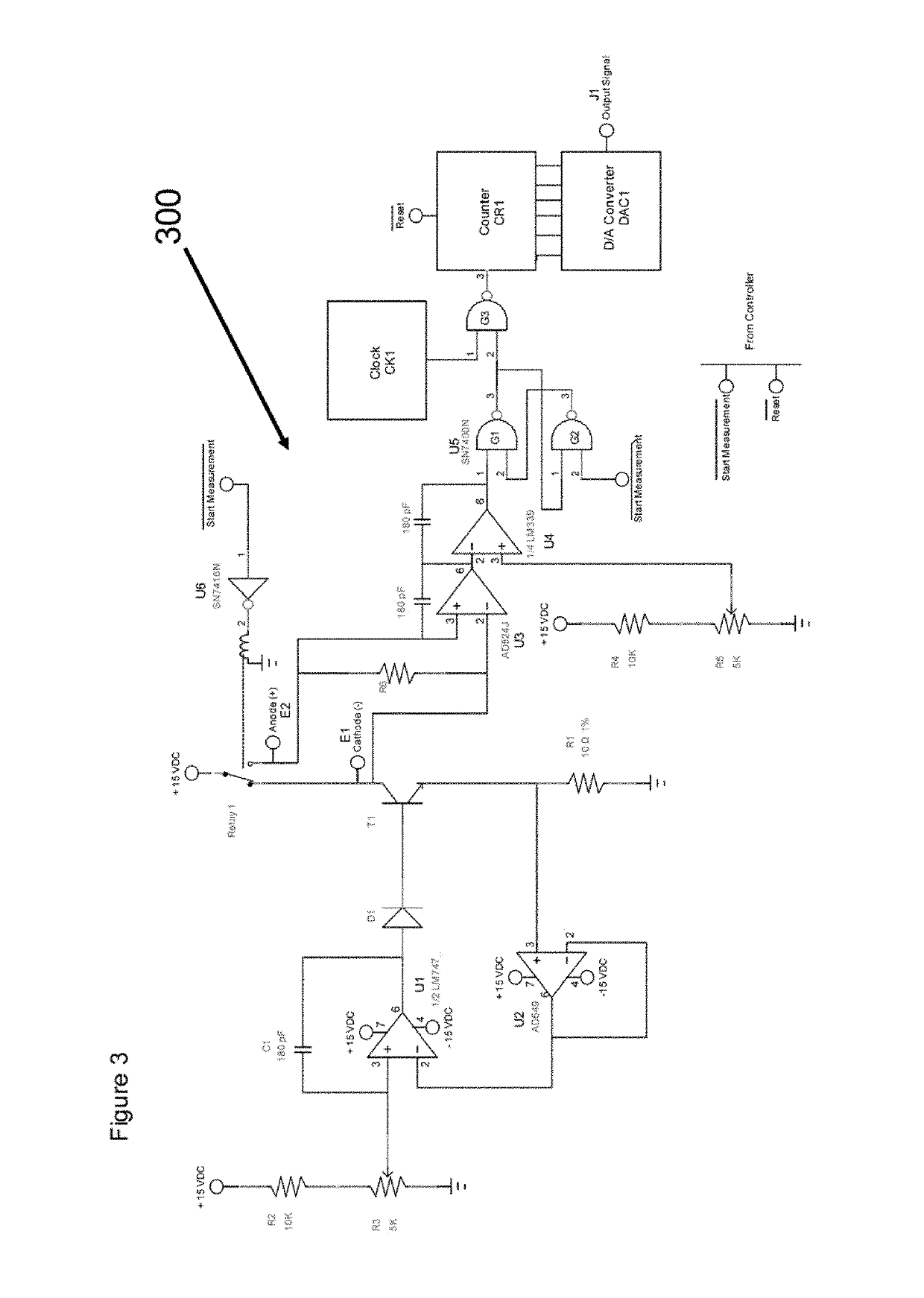Method and apparatus for measuring and controlling electrolytically-active species concentration in aqueous solutions
a technology aqueous solution, which is applied in the direction of liquid/fluent solid measurement, material electrochemical variables, instruments, etc., can solve the problems of inability to accurately measure the concentration of electrolytically active species in solution, the shelf life of the solution is very limited, and the reaction to proceed substantially to completion often takes an appreciable amount of time using conventional analysis arrangements. , to achieve the effect of low cost, low maintenance and robustness
- Summary
- Abstract
- Description
- Claims
- Application Information
AI Technical Summary
Benefits of technology
Problems solved by technology
Method used
Image
Examples
Embodiment Construction
[0031]The present invention relates in part to a method for rapid and accurate measurement of electrolytically-active species concentration in an aqueous solution for use in providing improved control of the concentration of the species in a source solution thereof. In the method, a sample containing an electrolytically-active species can be added in a selected amount into a measurement cell that has a working electrode and an auxiliary electrode, and a constant current is applied to the measurement cell while the working and auxiliary electrodes are in contact with the sample with monitoring of voltage difference across the electrodes until a detectable change in the voltage difference occurs. A feedback signal is generated based on a parameter of the change in the voltage difference that is directly proportional to the amount of the electrolytically-active species in the selected amount of the sample. The feedback signal can be used for process control. The measured parameter of t...
PUM
| Property | Measurement | Unit |
|---|---|---|
| constant current | aaaaa | aaaaa |
| volume | aaaaa | aaaaa |
| constant current | aaaaa | aaaaa |
Abstract
Description
Claims
Application Information
 Login to View More
Login to View More - R&D
- Intellectual Property
- Life Sciences
- Materials
- Tech Scout
- Unparalleled Data Quality
- Higher Quality Content
- 60% Fewer Hallucinations
Browse by: Latest US Patents, China's latest patents, Technical Efficacy Thesaurus, Application Domain, Technology Topic, Popular Technical Reports.
© 2025 PatSnap. All rights reserved.Legal|Privacy policy|Modern Slavery Act Transparency Statement|Sitemap|About US| Contact US: help@patsnap.com



